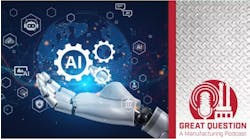Schneider Electric's Alban Cambournac
Climate change is considered a threat by 70% of people worldwide, and the level of concern is on the rise in the face of the coronavirus pandemic. Issues surrounding power and automation pose electrical risks to people and equipment, are a source of operational inefficiency, cause downtime, and can place a company’s reputation or environmental and sustainability goals in jeopardy.
The annual impact of unplanned down time for offshore oil-and-gas operators is more than $49million, and as high as $88 million for the worst performers. Data centers are averaging 2.4total facility shutdowns per year, with 10+ downtime events. At a cost of $5,600per minute, the losses quickly become astronomical.
To mitigate these risks, businesses must harness the Internet of Things (IoT), complete with sensors and networks to control physical assets. This approach holds the potential to revolutionize industries, providing agility and eco-efficiency through automation.
Services in the age of IoT
Economic models that prioritize production and consumption over efficiency and re-use are a key contributing factor to the climate-change crisis. A growing number of manufacturing companies are embracing the concept of servitization, or the use of products asa delivery platform for life-long, value-added services.
Switching to a service, rather than a product-based model of consumption, means much of the waste associated with product manufacturing can be eliminated.Simultaneously, manufacturers will benefit from lower overheads and more predictable revenues, while having a greater incentive to repair, re-use, and extend the life of physical assets. Originating in the software world, this model is now being enabled in physical objects throughIoT.
Natively digital-connected objects are not valuable alone, but when you tap into the power of IoT, connected power and automation, devices can measure equipment health and operational details to produce actionable, beneficial insights that protect assets and people and boost the larger business.
IoT boosts safety
Likewise, IoT can bring significant improvements to human safety. Having immediate access to valuable data on the status of critical infrastructure is vitally important to high-risk work environments. As we have witnessed by way of catastrophic events such as oil spills, oil-rig workers may have mere minutes to respond to an emergency. IoT-powered safety tools can relay critical data (in real-time) to support centers where safety protocols can be implemented immediately.
Enhancing asset resiliency and sustainability
IoT allows asset owners to monitor the condition of assets and carry out preventative maintenance immediately, instead of just dealing with the aftermath. Enhanced asset resiliency enables assets to work longer and deliver greater value over their lifetimes.
In addition, IoT-monitoring systems, coupled with aging equipment upgrades, can help to avoid failures and extend asset lifetimes. Control layers in electrical distribution have been connected since almost a decade ago, providing data that was used for local safety and control. Now, while this connection for control remains, connectivity can be added for monitoring and supporting operations. This greater efficiency and resiliency are key components of sustainability. WithIoT, assets can be made to do more, with less, for longer.
Ensuring secure networks
A major concern around IoT is that connecting devices to networks could expose a wider range of assets to cybersecurity attacks. The risk of cybercrime relating to critical assets is very real and needs to be top of mind.
To combat cyber-threats, it’s critical to consider what kind of data a hacker could access through the IoT. On most devices, a hacker would only be able to access the data being picked up by a specific sensor, and in more critical cases, there is a separate network to ensure there are no interconnections with the operations.
Businesses should consider implementing an IoT system that has a dedicated and experienced cybersecurity group behind it, one that can not only consult on internal product development, but also advise across a range of industries. This added layer of awareness can help ensure that everything from processes to equipment is safe.
IoT creates a world where assets provide valuable services indefinitely
The impact of digital and IoT on services will transform organizations across multiple industries. We all know this.IoT-based systems allow for unprecedented remote visibility into operations.IoT-based services have saved universities millions of dollars through the early discovery of equipment problems across power infrastructures that span massive square footage of varied industrial spaces. This, too, we all know.
IoT has the power to move an organization from reactive to preventative maintenance, contributing to safer, more resilient, and sustainable infrastructures that empowers a transition to a service-based business model.
Alban Cambournac is vice president of digital services with Schneider Electric US


